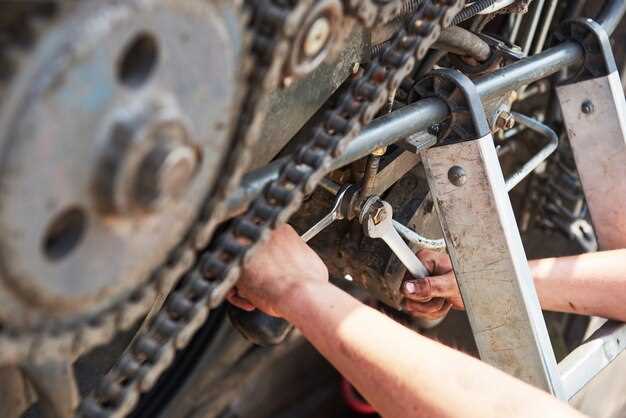
Valve cover gaskets play a critical role in the performance and longevity of your import vehicle’s engine. They are essential components that prevent oil leaks, which can lead to significant engine damage if left unchecked. Over time, exposure to heat and chemicals can cause these gaskets to become brittle, leading to failure. Understanding how to effectively repair or replace valve cover gaskets is vital for maintaining your vehicle’s health.
This article delves into the common symptoms of a failing valve cover gasket, the necessary tools for the repair process, and a step-by-step guide to ensure a successful installation. With attention to detail and a little mechanical knowledge, you can tackle this task efficiently, saving both time and money in the long run. Whether you are a seasoned DIYer or a novice looking to expand your automotive skills, this guide aims to equip you with the information needed to handle valve cover gasket repairs on a variety of import vehicles.
Moreover, we will discuss the various factors that can influence the lifespan of valve cover gaskets, such as engine temperature and oil type. By understanding these aspects, you can take proactive measures to enhance gasket durability and overall engine performance. So, let’s dive into the world of valve cover gaskets and explore how to keep your import vehicle running smoothly.
Identifying Symptoms of a Leaking Valve Cover Gasket

Identifying a leaking valve cover gasket is crucial for maintaining the health of an engine. One of the most common symptoms is the presence of oil leaks around the valve cover. This can often be noticed as oil pooling on the engine block or dripping onto the ground beneath the vehicle.
Another telltale sign is the appearance of an oily residue around the edges of the valve cover. This marks the area where the gasket may be failing, allowing oil to escape. Regularly checking the side of the engine can help in spotting this leakage early.
Increased oil consumption is also a notable indicator. If your vehicle is using oil more rapidly than expected, it may be due to a leaking gasket allowing oil to escape. Keeping track of oil levels can aid in determining if there is a leak.
Moreover, engine misfires or rough idling may occur. Oil leaking onto the spark plugs can cause them to foul, leading to decreased performance and efficiency. If you notice a drop in power or unusual engine behavior, it might be linked to a deteriorating gasket.
Lastly, an oil burning smell coupled with smoke can be alarming. If oil seeps onto hot engine components, it may produce smoke and result in a burning smell. This symptom should be addressed immediately to prevent further damage.
Step-by-Step Guide to Replacing Valve Cover Gaskets
Replacing valve cover gaskets is a common maintenance task for many import vehicles. This guide provides a systematic approach to ensure a successful gasket replacement.
Tools and Materials Needed:
1. New valve cover gasket
2. Torque wrench
3. Ratchet and socket set
4. Screwdrivers (flathead and Phillips)
5. Clean rags or paper towels
6. Engine degreaser
7. RTV silicone sealant (if required by the manufacturer)
Step 1: Prepare Your Workspace
Park the vehicle on a level surface and engage the parking brake. Disconnect the negative battery cable to prevent any electrical short circuits during the repair.
Step 2: Remove Engine Components
Depending on your vehicle model, you may need to remove various components to access the valve cover, such as air intake hoses, ignition coils, and other associated parts. Keep track of all fasteners and components for reassembly.
Step 3: Unbolt the Valve Cover
Using the ratchet and socket set, carefully remove the bolts securing the valve cover. Ensure to follow the proper sequence when unbolting to avoid warping the cover. Set the bolts aside in an organized manner.
Step 4: Remove the Old Gasket
Once the valve cover is detached, carefully lift it off. Inspect the old gasket for signs of wear or damage. Remove it completely, along with any residue left on the valve cover and cylinder head. Use an engine degreaser to clean the surfaces thoroughly.
Step 5: Install the New Gasket
Position the new gasket onto the valve cover or the cylinder head, depending on your vehicle’s design. If the manufacturer recommends it, apply a thin layer of RTV silicone in the corners for extra sealing. Ensure the gasket aligns correctly with all holes.
Step 6: Reattach the Valve Cover
Carefully place the valve cover back onto the engine, ensuring that the gasket stays in position. Hand-tighten the bolts initially, and then use the torque wrench to tighten them to the manufacturer’s specified torque setting.
Step 7: Reassemble Engine Components
Reinstall any components that were removed earlier, such as ignition coils and air intake hoses. Ensure all connections are secure and properly fitted.
Step 8: Reconnect the Battery
Once all parts are in place, reconnect the negative battery cable. Perform a final visual inspection to ensure no tools or debris are left in the engine compartment.
Step 9: Test the Engine
Start the engine and let it run for a few minutes. Check for any signs of leaks around the valve cover. If everything appears normal, the gasket replacement is complete.
Regularly inspect the valve cover gasket for any signs of leaks or damage to maintain engine performance and prevent oil leaks.
Troubleshooting Common Issues After Gasket Replacement

After replacing the valve cover gasket on an import vehicle, several common issues may arise that require immediate attention. Proper troubleshooting can prevent further engine damage and ensure optimal performance.
1. Oil Leaks: One of the primary concerns after a gasket replacement is the appearance of oil leaks. Check for signs of oil pooling around the valve cover, which may indicate improper sealing. Ensure that the gasket is seated correctly and that all bolts are tightened to the manufacturer’s specifications. Remember to inspect the surface for any old gasket material that might have been left behind.
2. Engine Overheating: An overheating engine can result from an improperly installed valve cover gasket, leading to increased pressure and coolant leaks. Verify that the gasket does not obstruct coolant passages and ensure that there are no signs of coolant mixing with oil. If overheating persists, consider checking the thermostat and coolant levels.
3. Engine Misfires: If the vehicle experiences misfires after the gasket replacement, it might be due to unplugged or damaged ignition components. Inspect the wiring and connectors around the valve cover area to ensure everything is correctly reattached. Consider checking the spark plugs and coils for any signs of oil contamination, which can cause firing issues.
4. Excessive Engine Noise: A rattling or ticking sound coming from the engine might indicate a loose valve cover. Reassess the torque on the bolts to ensure they are adequately tightened. If noise persists, check for any damage to the valve train components that may have been disturbed during the gasket replacement.
5. Poor Idle Quality: Any changes in idle quality can result from a vacuum leak caused by improper gasket installation. Inspect the intake manifold gaskets in conjunction with the valve cover gasket to ensure a proper seal. Listen for hissing sounds that indicate escaping air.
For effective troubleshooting, always refer to the vehicle’s service manual to follow the recommended procedures. Whether addressing leaks, overheating, or performance issues, thorough inspection and adjustment are key to achieving a successful repair.




